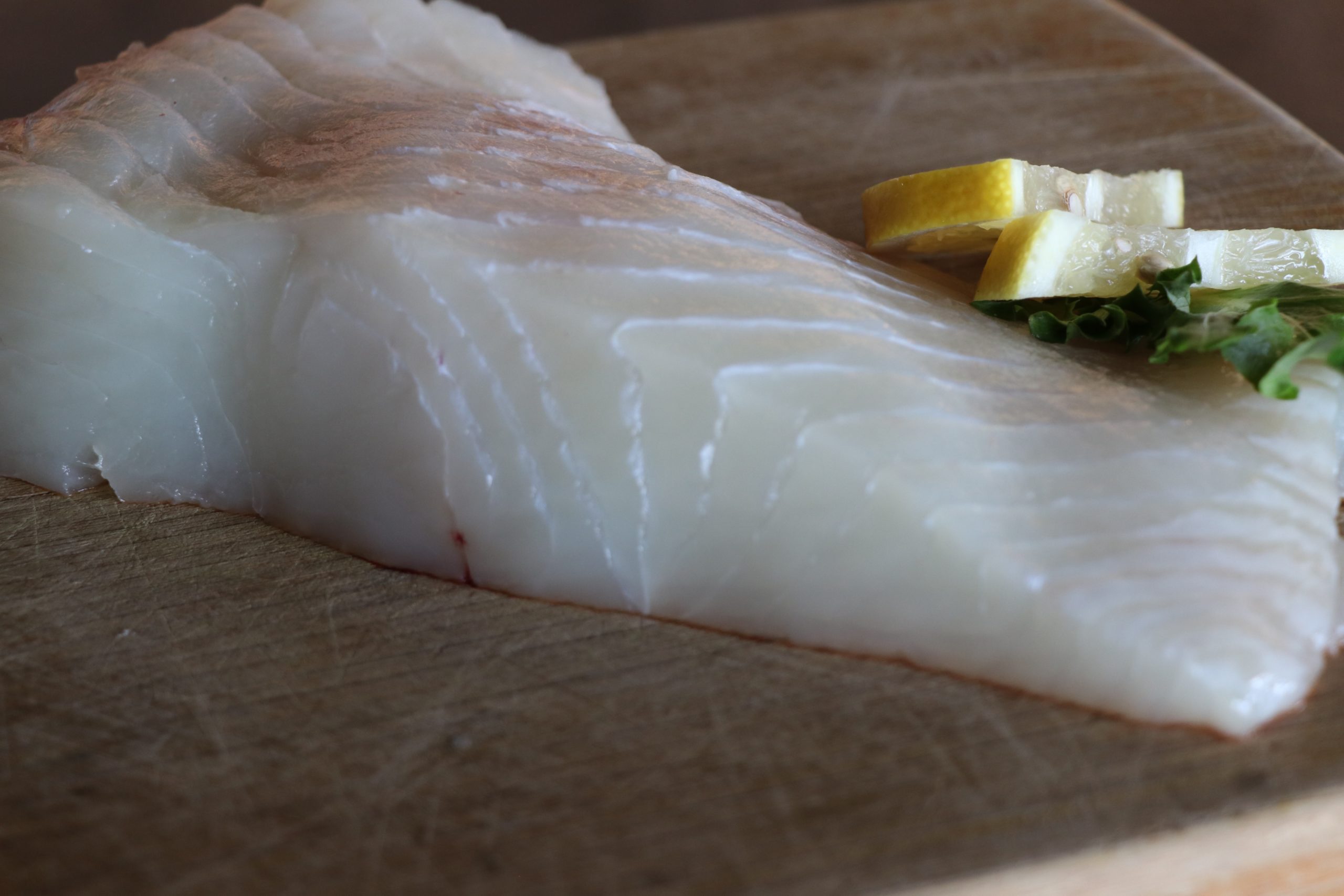
Bright translucent white.
Very low fat content when compared to the salmons.
A delicious mild and sweet meat. Completely lacking of a ‘fishy’ taste.
Firm with large flakes. Holds together well after cooking
Halibut, a prized fish in the seafood world, stands out for several distinctive attributes that make it a culinary favorite. Known for its large size, halibut can yield impressively sized fillets, often hefty enough to serve several people. This size aspect not only makes it a practical choice for family meals and larger gatherings but also allows for diverse culinary applications, from steaks to smaller portioned dishes.
The flesh of halibut is firm, dense, and yet delightfully flaky, setting it apart from many other fish species. Its texture is one of its most celebrated qualities, as it holds up exceptionally well to a variety of cooking methods. Whether it’s grilled, roasted, or pan-seared, halibut maintains its integrity, offering a satisfying mouthfeel. This makes it a versatile ingredient in the kitchen, adaptable to both simple and sophisticated recipes.
In terms of flavor, halibut is known for its mild, clean taste. It doesn’t have the oiliness or the pronounced flavor of fish like salmon or mackerel, making it a suitable option for those who prefer a subtler fish taste. Its gentle flavor makes it a fantastic canvas for an array of seasonings and sauces, allowing other ingredients to shine while still providing a satisfying depth of its own.
Halibut’s culinary uses are wide-ranging due to its favorable texture and flavor profile. It pairs well with a variety of ingredients, from fresh herbs and citrus to more robust spices and sauces. The fish is a popular choice in fine dining establishments but is equally at home in casual settings, where its large fillets can be efficiently utilized in family-style meals. Whether featured in an elegant dish or a comforting home-cooked meal, halibut’s combination of large size, firm texture, and mild flavor make it a sought-after choice in the realm of seafood.